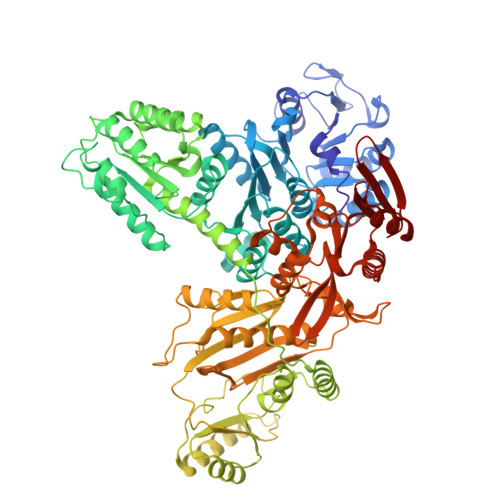Structural basis of the catalytic and allosteric mechanism of bacterial acetyltransferase PatZ.
Park, J.B., Lee, G., Han, Y.Y., Kim, D., Heo, K., Kim, J., Park, J., Yun, H., Lee, C.W., Cho, H.S., Kim, J.S., Steinegger, M., Seok, Y.J., Roh, S.H.(2025) Proc Natl Acad Sci U S A 122: e2419096122-e2419096122
- PubMed: 40498448
- DOI: https://doi.org/10.1073/pnas.2419096122
- Primary Citation of Related Structures:
9ISB, 9ISQ, 9IT0 - PubMed Abstract:
GCN5-related N -acetyltransferases (GNATs) are essential for regulating bacterial metabolism by acetylating specific target proteins. Despite their importance in bacterial physiology, the mechanisms behind their enzymatic and regulatory functions remain poorly understood. In this study, we investigated the structures of Escherichia coli protein acetyltransferase Z (PatZ), a Type I GNAT, and examined its ligand interactions, catalytic mechanism, and allosteric regulation. PatZ functions as a homotetramer, with each subunit comprising a catalytic and a regulatory domain. Our results demonstrate that the regulatory domain is vital for acetyltransferase activity, as it triggers cooperative conformational changes in the catalytic domain and directly aids in the formation of substrate-binding pockets. Additionally, a protein structure-based evolutionary analysis of bacterial GNAT types revealed a distinct regulatory domain pattern across phyla, highlighting its crucial role in responding to cellular energy levels.
- School of Biological Sciences, Seoul National University, Seoul 08826, Republic of Korea.
Organizational Affiliation:


















